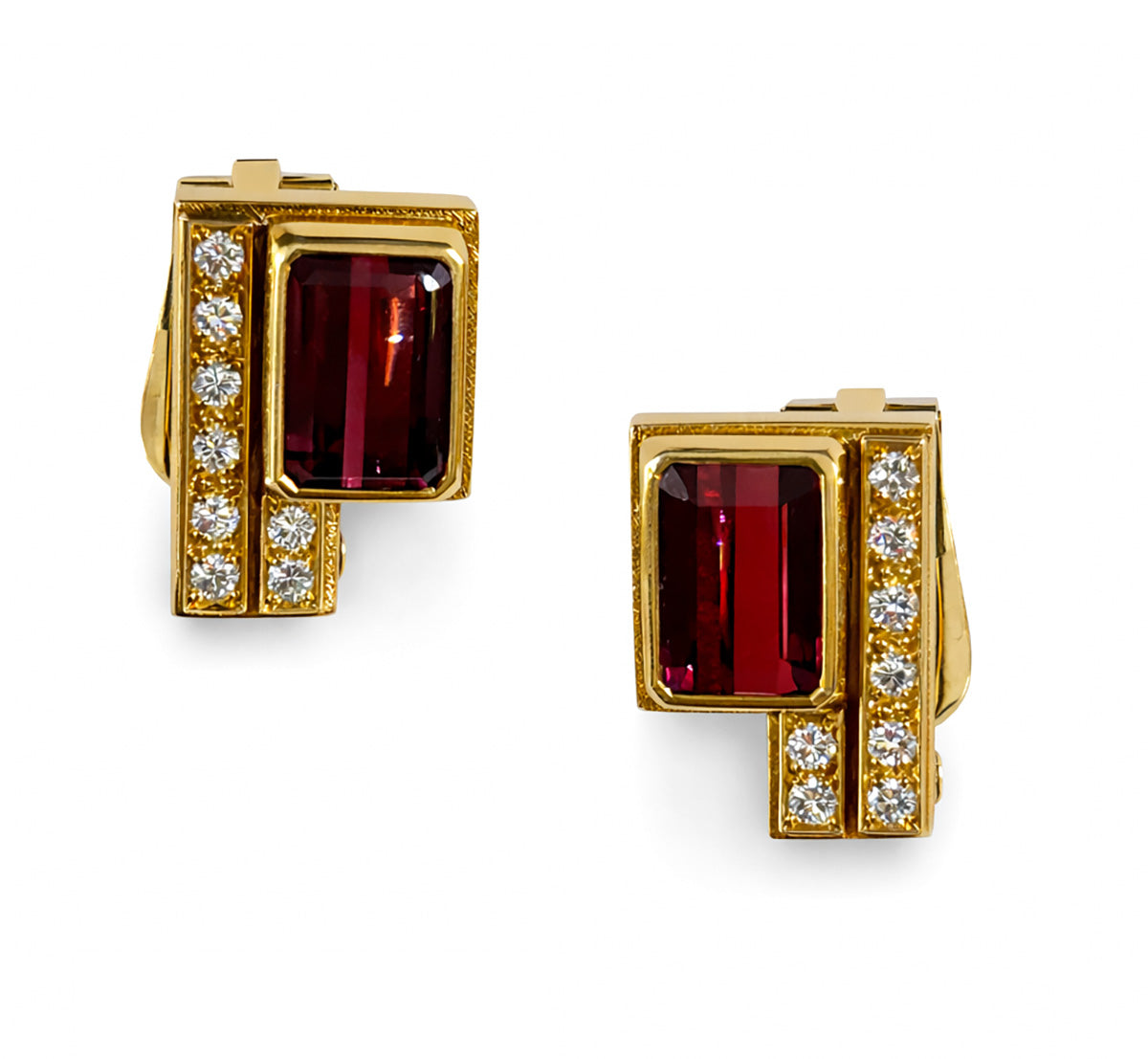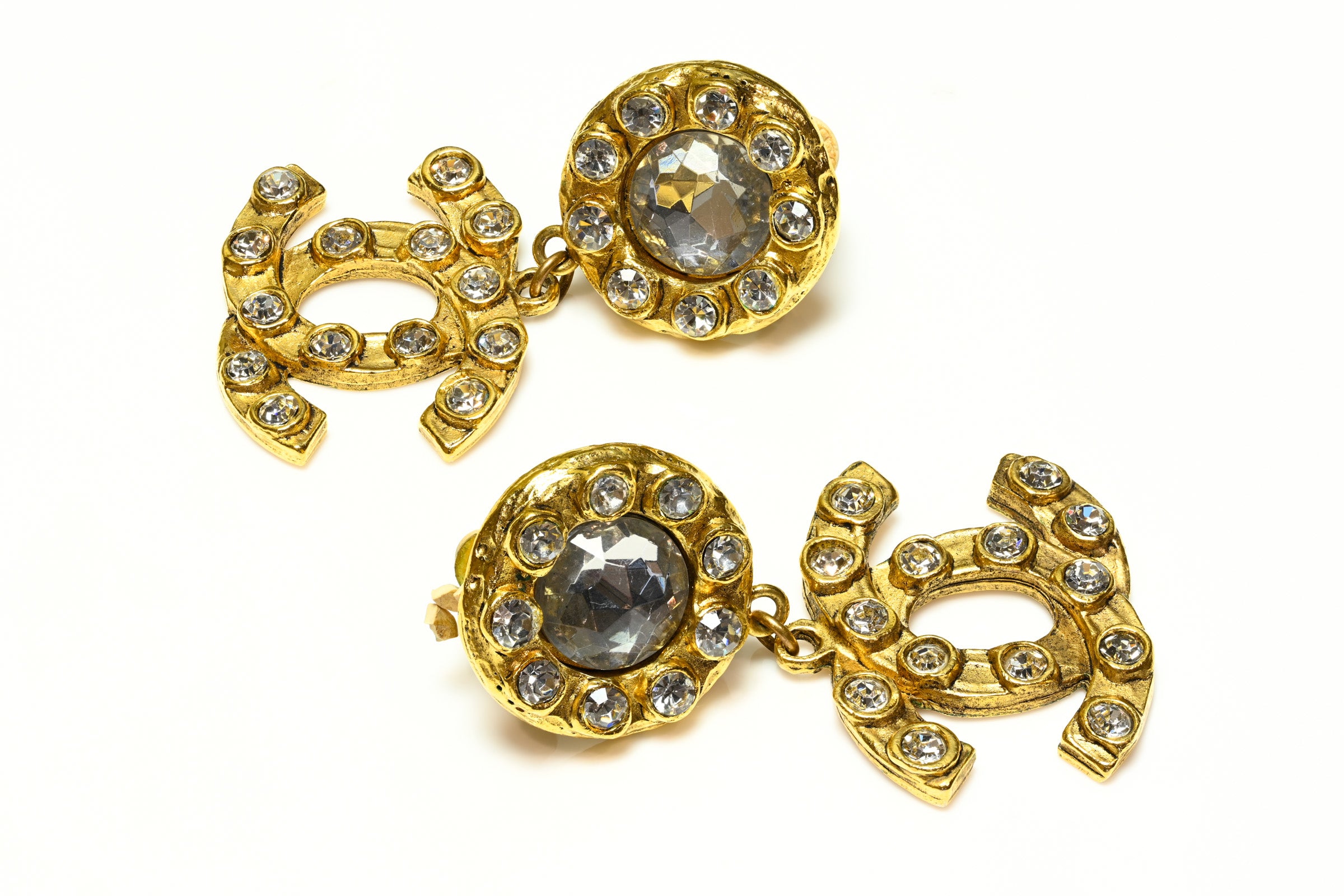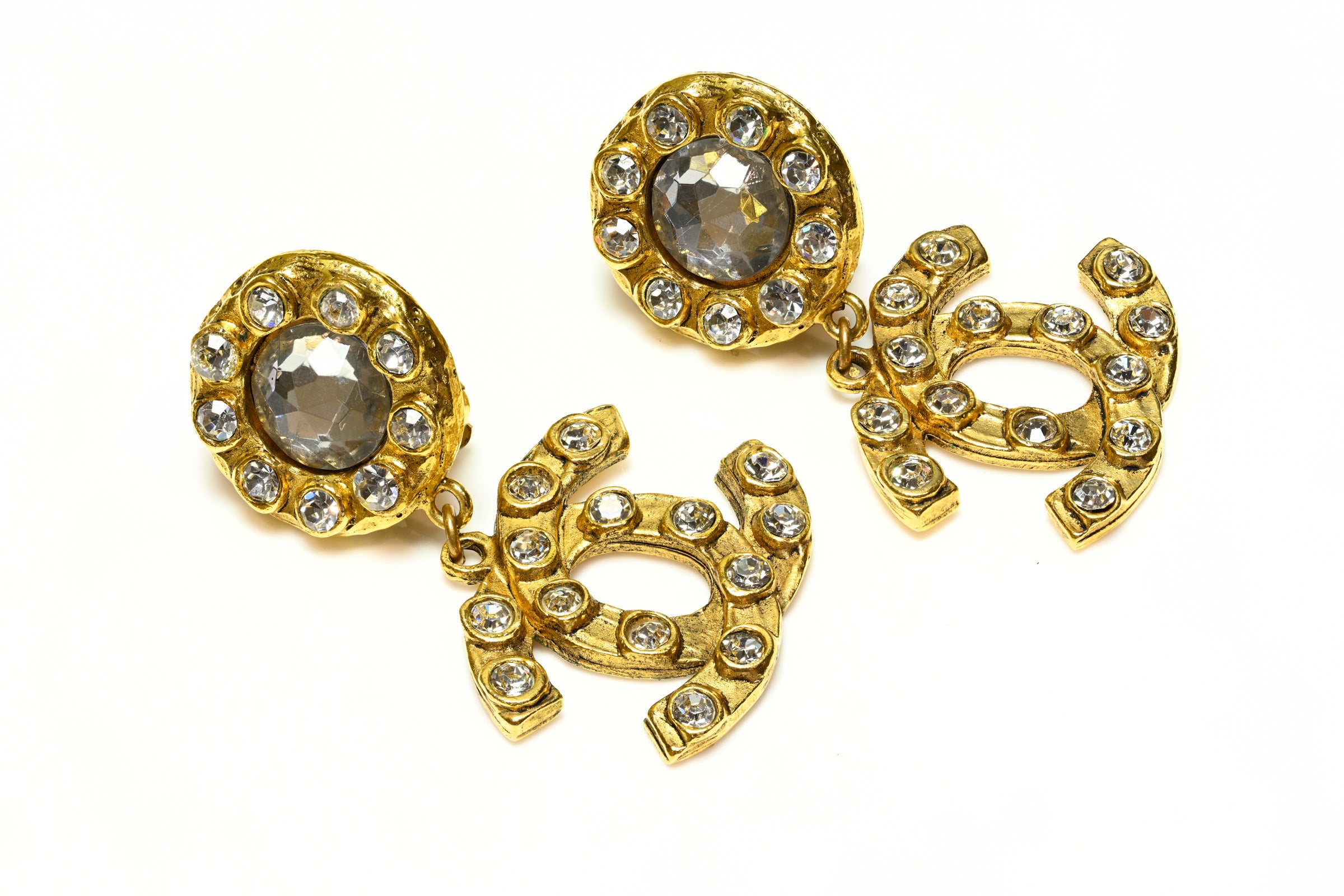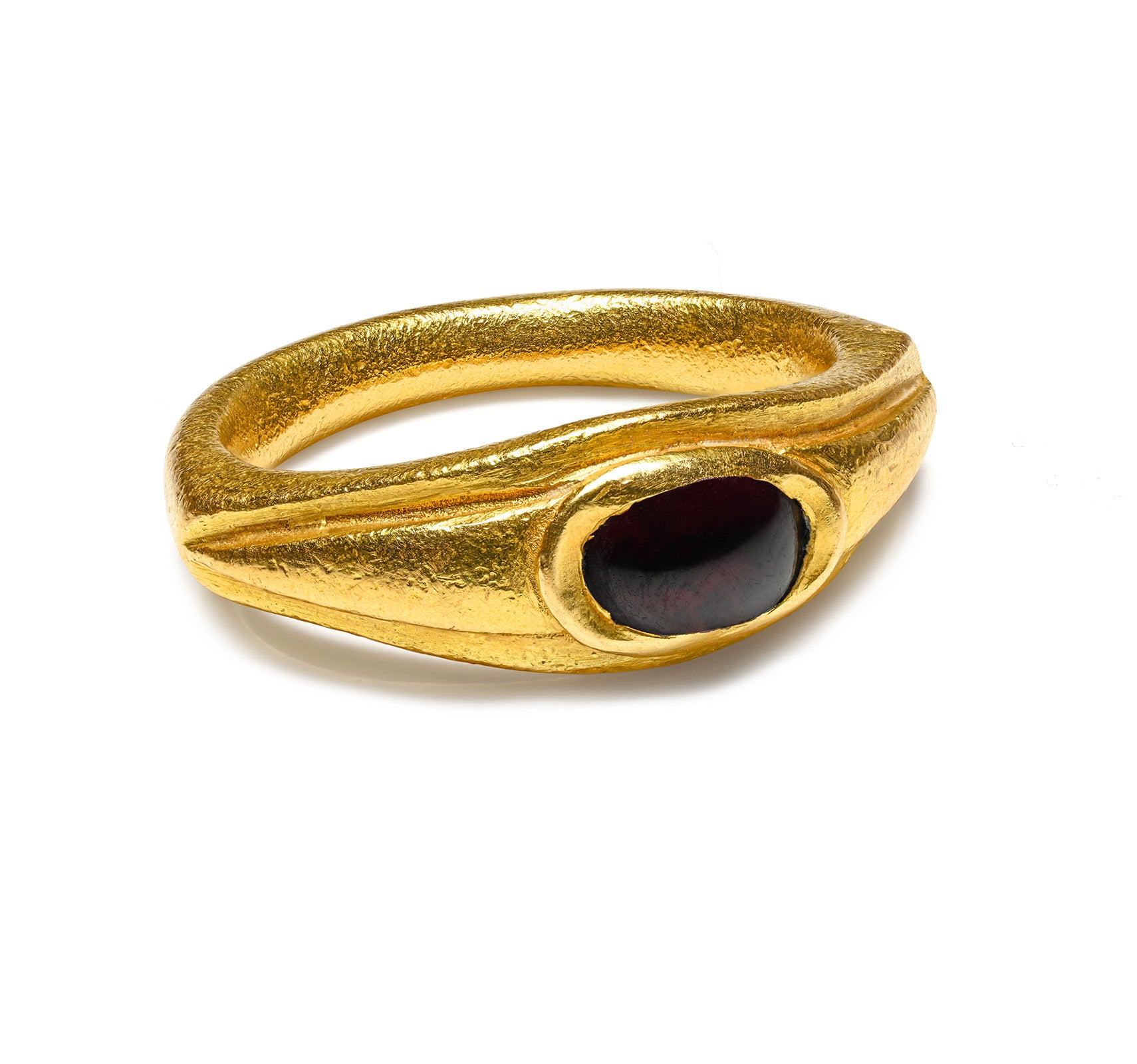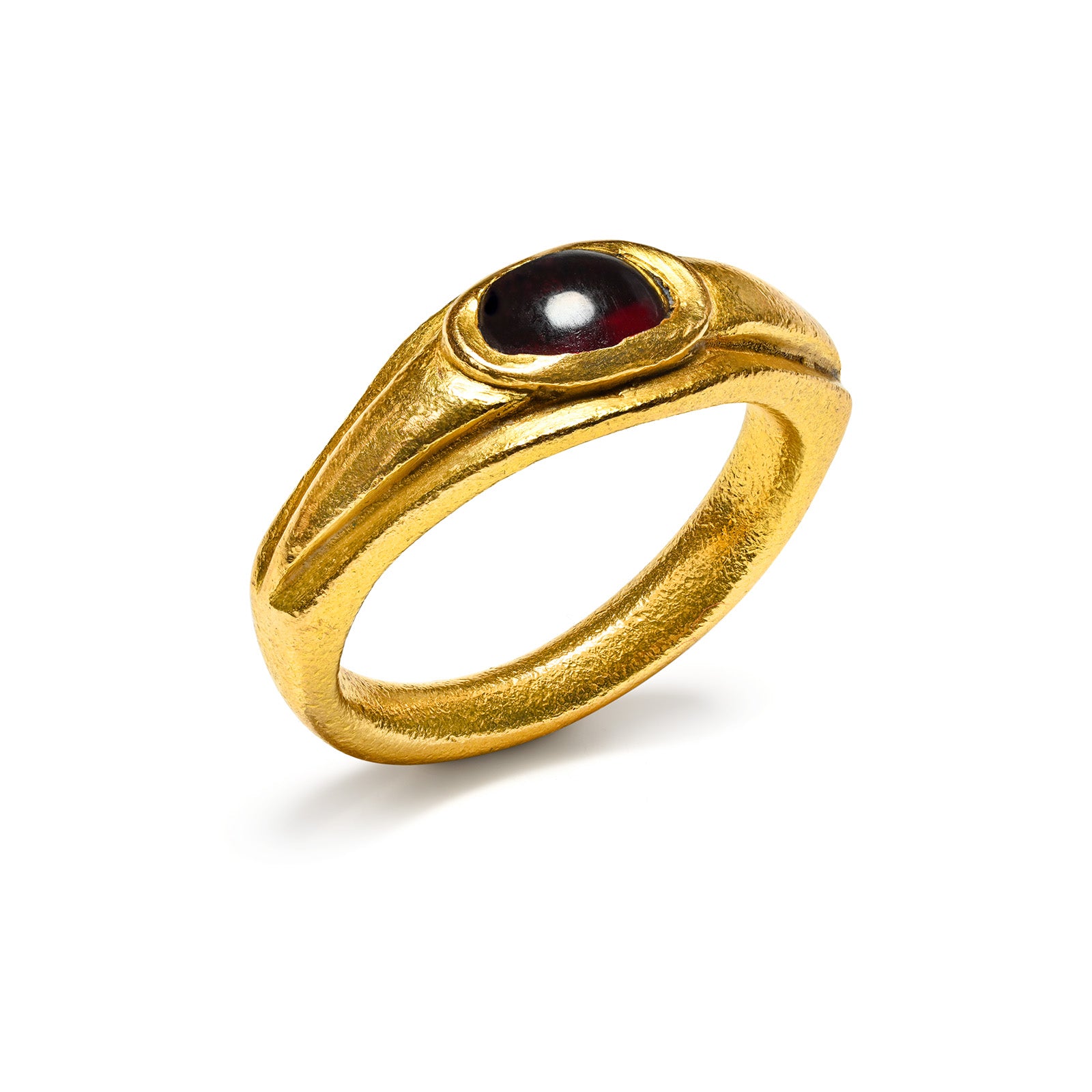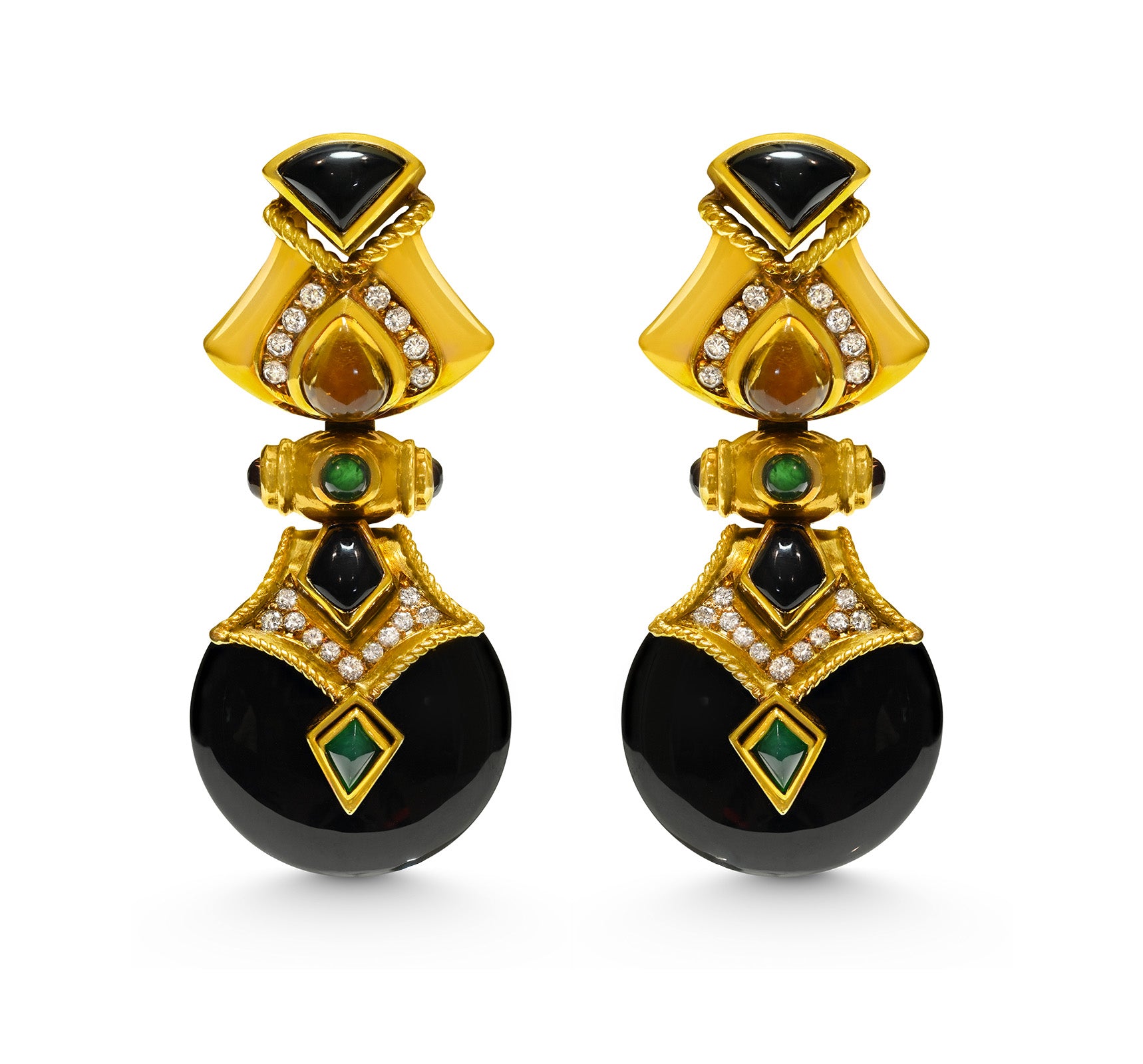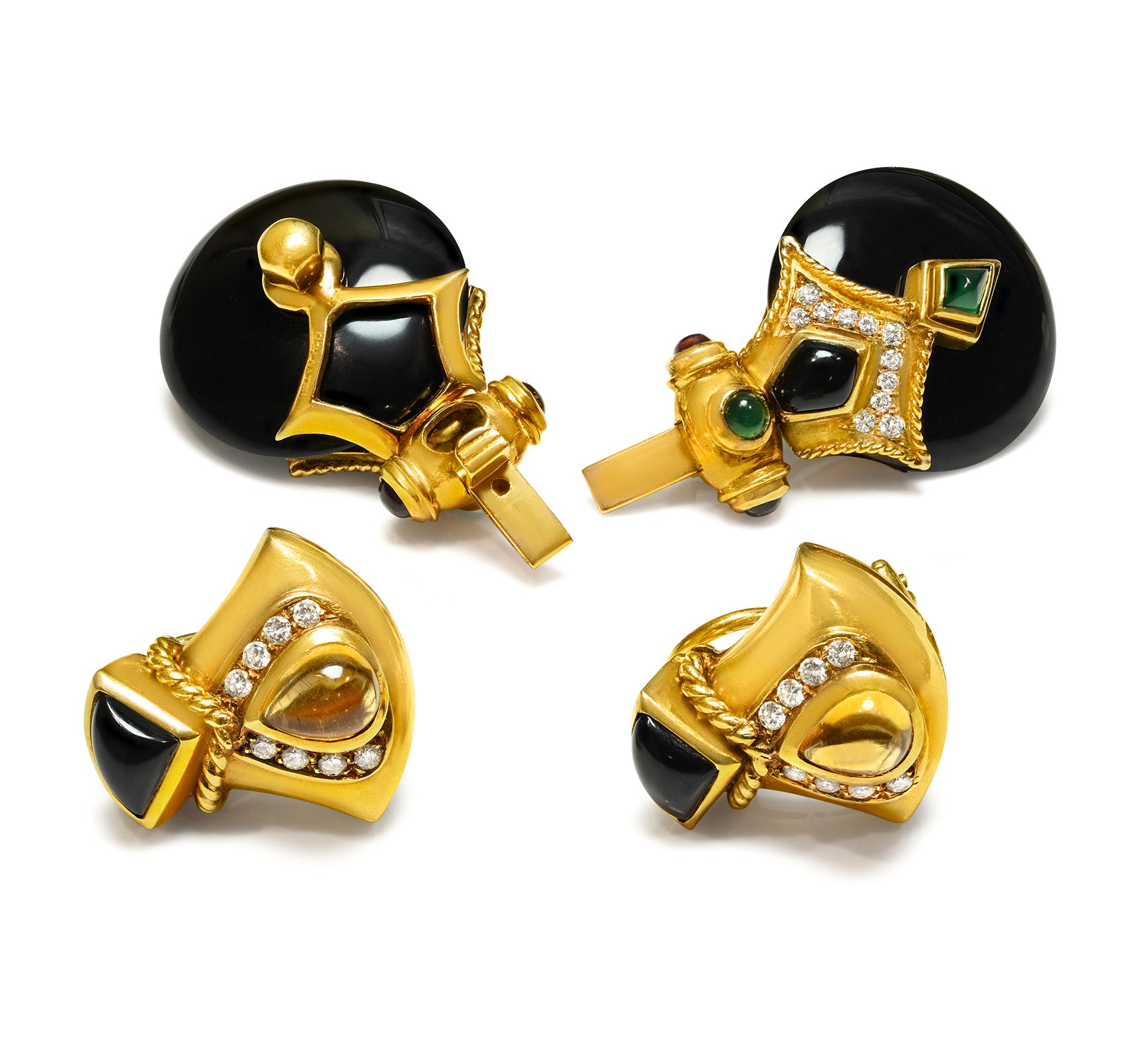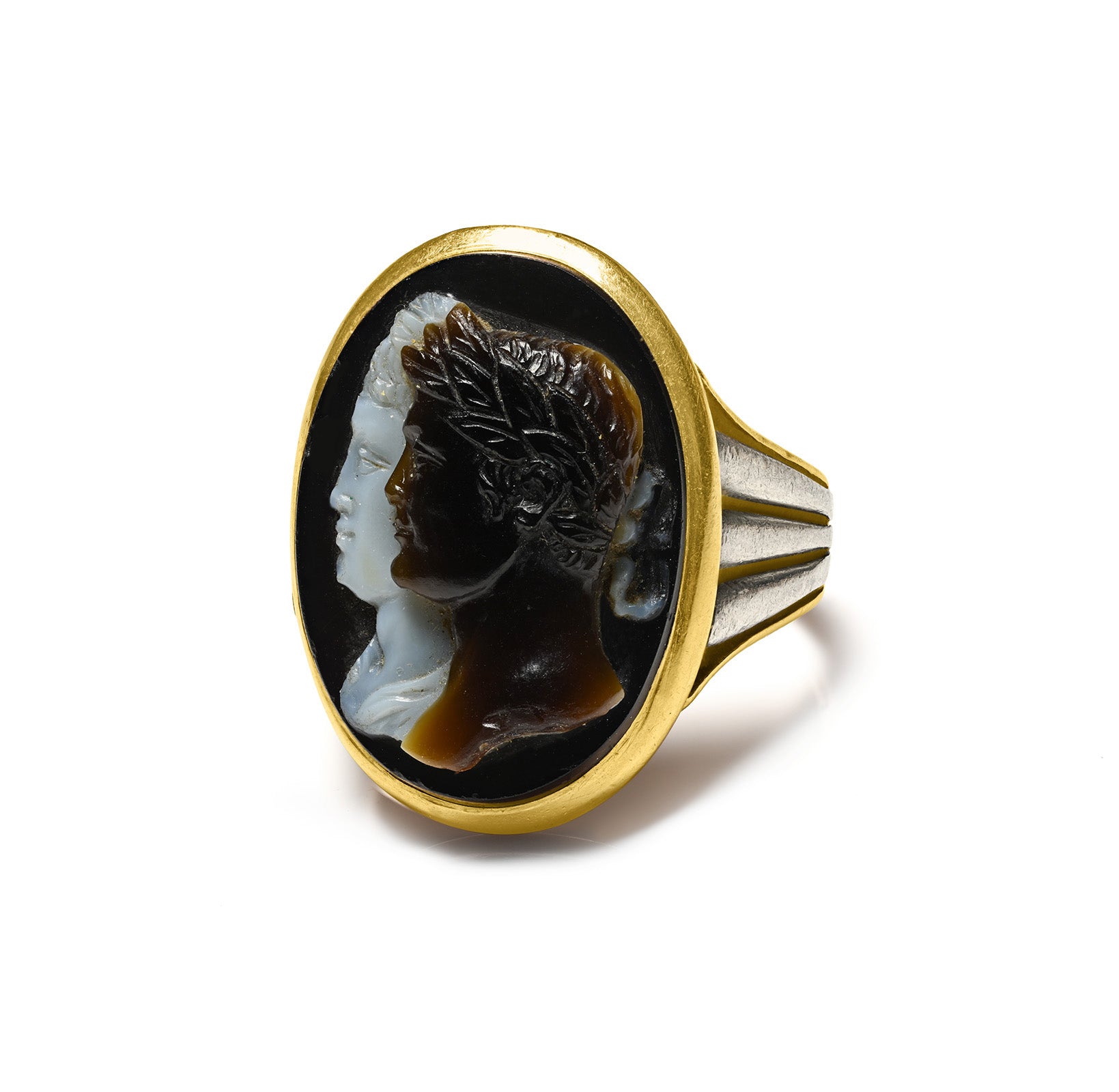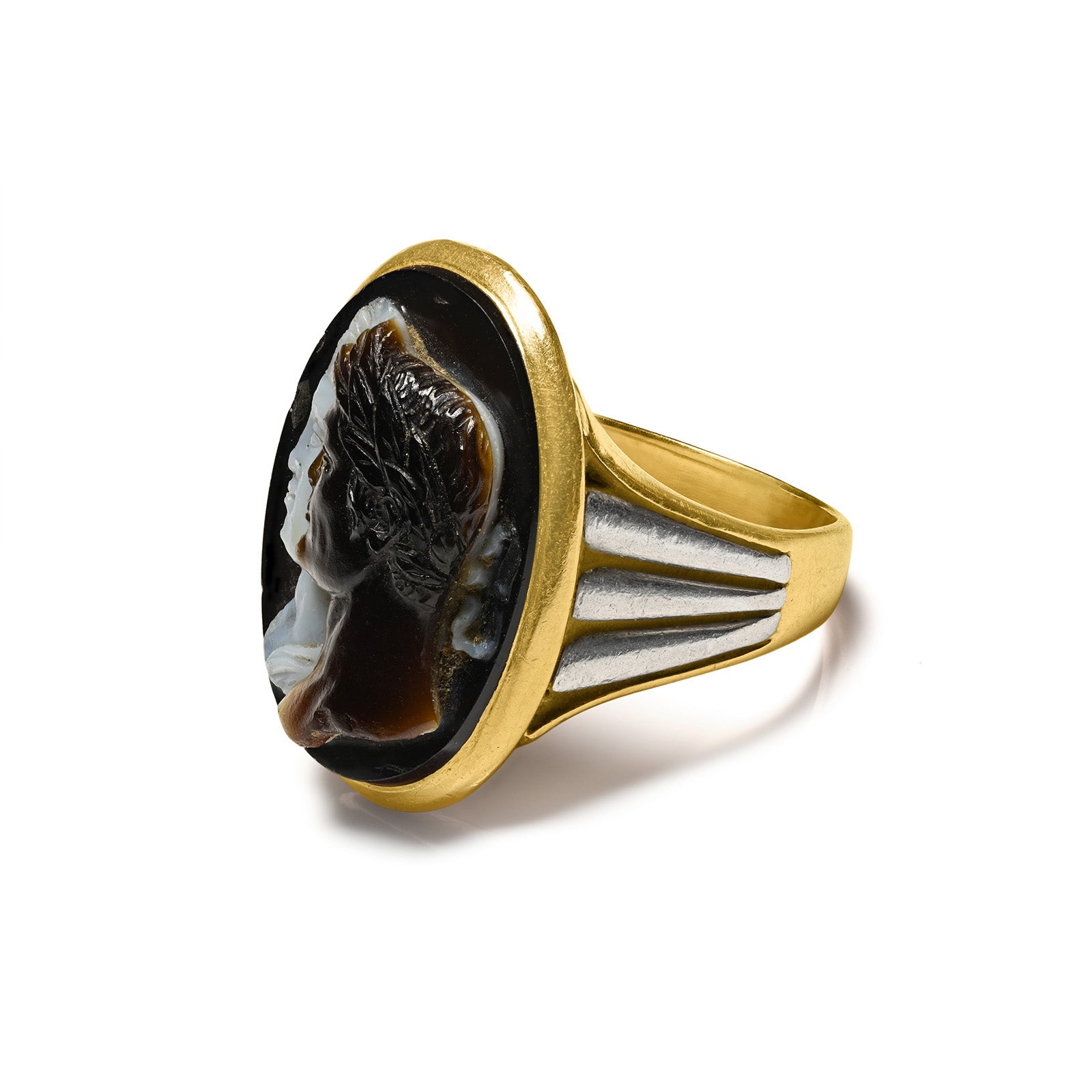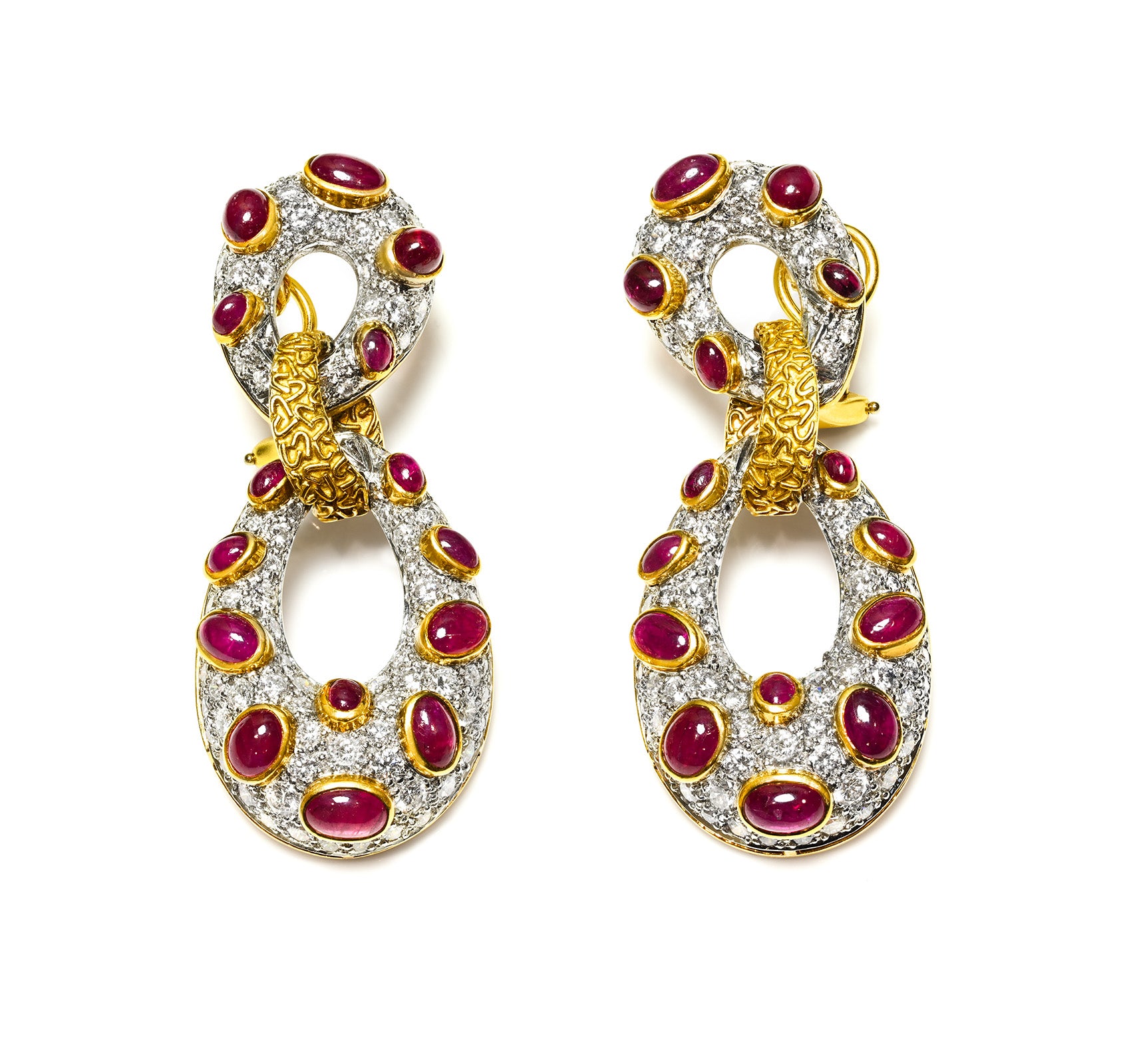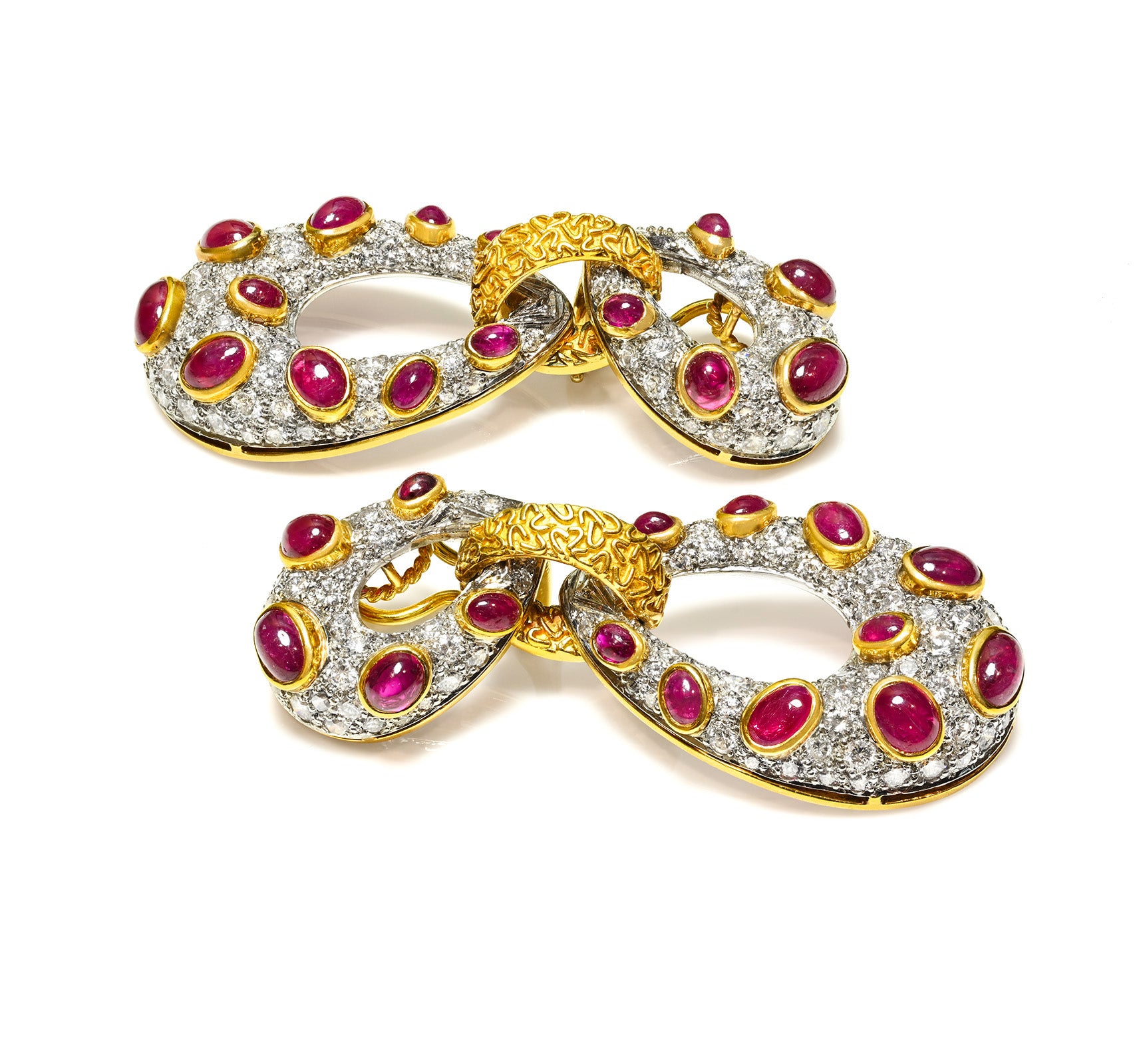
The Art and History of Antique Jewelry
Antique jewelry has always fascinated humanity through its glamour, historical significance, and artistic value.
In her captivating and richly illustrated book, Jewelry, Marie-Louise d'Otrange Mastai explores the art of jewelry, tracing its evolution from prehistoric times to the present day. She takes readers on a compelling journey through history, beginning with the treasures of ancient Egypt, including the famed jewels of Tutankhamun.
Mastai then highlights the refined elegance of ancient Greece, the ornate designs of Roman jewelry, and the exquisite cloisonné enameling mastered by Byzantine artisans. Each era’s jewelry uniquely captures the cultural and artistic brilliance of its time.
The book further explores barbarian jewels and regal adornments of the Middle Ages, emphasizing the symbolism and power inherent in these historic pieces. The Renaissance introduced new levels of artistic sophistication, while the 19th century experienced a revival of ancient styles—a fascinating trend often overlooked today.
Here are a few insightful highlights from the book.
The Origins of Jewelry
The human fascination with gems is deeply embedded in our collective consciousness. As early as the Bronze Age, people pierced and strung rough garnets to create personal ornaments. Yet, even these ancient pieces reflect an advanced stage in jewelry’s long evolution.
Jewelry likely originated far earlier when a primitive ancestor picked up a shiny pebble or shell, admired it, and chose to keep it as personal adornment. This instinct for decoration marks the very beginning of humanity's enduring relationship with jewelry.
Jewelry as Art
Jewelry consistently demonstrates a refined understanding of harmony in color, line, and form. The artistic impulse behind jewelry parallels the inspiration that led to the creation of monumental architecture, heroic statues, and grand mural paintings.
Jewelry pieces associated with royalty or religious institutions were often substantial and imposing.
Queen Charlotte of England’s magnificent stomacher, for example, was as heavy as a knight’s armor, and ecclesiastical jewels—like the ornate cope morse—allowed artists to showcase extraordinary sculptural skill on an intimately small scale.
Thus, jewelry transcends mere decoration, engaging some of the greatest artistic minds in history. These objects, blending craftsmanship with creativity, stand as true works of art.


Stomatcher of Queen Charlotte - National Gallery of London, via "Jewelry" by Marie-Louise d'Otrange Mastai
The Age of Gold
The period from the beginning of recorded history to the eve of the Christian Era spans approximately thirty-five hundred years.
Scholars have studied this expansive timeframe from various angles, but for collectors of antique jewelry, it can aptly be described as the Age of Gold—distinct from the poetic Golden Age of peace and prosperity celebrated by ancient Greek and Roman writers.
Rather, this term refers to the exceptional gold objects and decorations crafted in the regions surrounding the Mediterranean.
The art of the goldsmith formed a dazzling belt around the Mediterranean Sea, and many of these glittering artifacts have endured, serving as testimonies to the splendor of lost civilizations.
Egyptian Masterpieces
The celebrated treasures of Tutankhamun mark a midpoint in the long history of Egyptian jewelry. Earlier examples, crafted roughly twenty centuries before his reign, were simpler—often consisting merely of strings of beads made from shell, stone, or baked clay, typically glazed in a distinctive vitreous blue. This vibrant blue would remain a hallmark of Egyptian decorative art for millennia.
By around 2600 B.C., during the early dynasties of the Old Kingdom, goldsmithing began to flourish. Initially modest, early Egyptian jewelry soon exhibited a refined elegance still resonant with contemporary tastes. Designed to complement the human body, whether clothed or bare, Egyptian jewelry included familiar items such as necklaces, bracelets, armlets, anklets, rings, girdles, combs, and diadems.
An iconic Egyptian jewelry piece was the broad collar—a wide, tiered band of beads or ornaments that draped elegantly across the chest and shoulders. Depicted in numerous wall paintings and sculptures, these collars were worn by Egyptians of all social classes, except perhaps laborers performing strenuous tasks.
Crafted from gold or vibrantly colored faience, these pieces symbolized elements of nature, such as palm leaves, flowers, grapes, and dates. Flower collars, in particular, represented stylized versions of actual floral garlands, some of which have miraculously survived.
Notable examples can be admired at the Metropolitan Museum of Art in New York City and draped over the statue of Kha, the "Overseer of Works," in the Egyptian Museum in Turin, Italy.

Egyptian Necklace, Metropolitan Museum of Art, New York, Rogers Fund, 1940, via "Jewelry" by Marie-Louise d'Otrange Mastai; Cooper-Hewitt Museum
Egyptian jewelry often revealed a deep sensitivity to the natural world. Shells, tiger teeth, and scarabs were utilized both in their original forms and as stylized motifs. Earrings, likely influenced by Asian styles, adorned not only women but also young princes.
A remarkable pair discovered in Tutankhamun’s tomb showcases duck heads crafted from blue glass with falcon wings inlaid with precious stones—a testament to the coexistence of naturalism and stylization in Egyptian artistry.
Funerary Jewelry and Religious Adornments
Among the most extraordinary examples of funerary jewelry is the famous gold mask from Tutankhamun's third inner coffin.
While typical funerary pieces tended to be more modest, this mask was destined for a pharaoh, designed meticulously to accompany him throughout his eternal rest and onward into his afterlife as the sun god.

Tutankhamun covered in gold, via "Jewelry" by Marie-Louise d'Otrange Mastai; Cooper-Hewitt Museum
Jewelry also occupied an essential place in Egyptian religious practices. Statues representing gods and goddesses were often richly adorned with collars, earrings, necklaces, and bracelets.
A notable artifact is a bronze statuette depicting the cat-headed goddess Bastet, elegantly adorned with gold earrings. Such pieces highlight jewelry’s significant role in Egyptian rituals and underscore the close relationship between adornment and worship.


Metropolitan Museum of Art, via "Jewelry" by Marie-Louise d'Otrange Mastai; Cooper-Hewitt Museum
The Influence of Neighboring Civilizations
While Egypt’s prosperity and stability allowed for artistic perfection, other regions of the Levant and Near East produced less jewelry due to frequent conflicts—much of their creations were inevitably lost to war. Nonetheless, archaeological discoveries continue to unveil remarkable artifacts from these ancient cultures.
One striking example is a Sumerian helmet crafted from hammered electrum—a refined alloy of gold and silver. Its close-fitting design resembles a metallic wig and showcases craftsmanship rivaling that of ancient Egyptian masters.
Another remarkable piece is a head ornament dating to around 2500 B.C., created to adorn a woman’s head with elegantly rendered floral motifs. This stunning artifact was poignantly discovered adorning a sacrificial victim in the solemn death pits of Ur.

Sumerian Helmet, Iraq Museum, via Jewelry by Marie-Louise d'Otrange Mastai; Cooper-Hewitt Museum
Phoenician Elegance and Innovation
The ancient Mediterranean served as a crossroads of cultural exchange, facilitated primarily by the Phoenicians, whose tireless voyages fostered diverse artistic influences in their jewelry. Phoenician craftsmanship, highly eclectic in nature, drew inspiration from surrounding civilizations.
The celebrated bust of the Lady of Elche, discovered in Spain and now exhibited in the Louvre, exemplifies Phoenician elegance. Adorned with an imposing diadem, two distinctive wheel-like ornaments flanking her face, and elaborate tassel-like earrings, the bust radiates opulence comparable to the treasures of the Egyptian court. Massive necklaces bearing sculptural pendants further underscore Phoenician artistic ambition and wealth.
Phoenician artisans were technically proficient goldsmiths, credited with inventing granulation—the intricate technique of decorating metal surfaces with minute spheres of gold, a hallmark of refined craftsmanship.
Anatolian Craftsmanship
Further from the Mediterranean, artisans in Troy and other affluent Anatolian centers (modern-day Turkey) produced compelling and expressive jewelry pieces.
Among these is a striking necklace composed of sizable golden spangles, unearthed from the pre-Hittite royal tombs at Alaca Hüyük.
Although somewhat primitive compared to Egyptian masterpieces, it reveals a potent artistic vision, demonstrating that the creative impulse behind jewelry transcended cultural and geographic boundaries, thriving even in its less refined expressions.
Greek and Etruscan Jewelry
Greek jewelry is particularly celebrated for its sculptural quality, epitomized by the pendent earring—a design that came to define Greek ornamentation. This sculptural essence was evident not only in earrings but across various forms of Greek jewelry, reflecting the Greek ability to harmonize adornment with refined artistic expression.
Greek goldsmiths excelled in advanced techniques such as filigree (delicate metalwork) and repoussé (hammered designs). Jewelry from Greece skillfully balanced naturalistic motifs with idealized forms, mirroring the principles that informed Greek sculpture and architecture.
An especially iconic Greek design was the snake bracelet, ranging from a simple loop to intricate masterpieces. A remarkable example involves two serpents entwined to form the symbolic Hercules knot, representing eternal bonds and strength.

Antique Jewelry - via "Jewelry" by Marie-Louise d'Otrange Mastai; Cooper-Hewitt Museum
Greek funerary jewelry tended to be delicate and modest, crafted explicitly for burial rather than everyday use. In contrast to the extravagant treasures found in Egyptian tombs like Tutankhamun’s, Hellenistic burial ornaments were typically subtle and naturalistic.
Exquisite surviving examples include gold wreaths meticulously shaped to resemble foliage—poignant adornments for the journey to the idyllic Elysian Fields.

Antique Jewelry - via "Jewelry" by Marie-Louise d'Otrange Mastai; Cooper-Hewitt Museum
The Etruscans
In the seventh century B.C., while the Greeks were rising to cultural prominence, the Etruscans—an ancient and enigmatic civilization—flourished in what is now modern Tuscany and Umbria. Although their precise origins remain a subject of debate, the sophisticated gold jewelry left behind testifies to their exceptional artistry and creative vitality.
Despite having no natural gold resources of their own, the Etruscans perfected jewelry-making by acquiring both precious metals and technical expertise from Greek traders. They became especially renowned for their granulation technique, involving tiny, perfectly formed gold granules meticulously arranged in intricate patterns.
A striking example is an early Etruscan fibula, adorned with a frieze depicting wild animals. Another remarkable piece features a pendant shaped as the bearded head of the river god Achelous.

Antique Etruscan Jewelry - via "Jewelry" by Marie-Louise d'Otrange Mastai; Cooper-Hewitt Museum
Etruscan jewelry often included prominent spherical ornaments known as bullae (Latin for "bubbles"). Unlike Greek artisans, who preferred refined and restrained forms, Etruscan jewelers displayed a bold expressiveness, incorporating materials such as amber, agate, animal teeth, and claws. The robust and assertive style embodied Etruscan exuberance and zest for life.
Despite Roman criticism of Etruscan extravagance, their artistic influence persisted. After Roman conquest, Etruscan designs were assimilated into Roman jewelry traditions, leaving an enduring imprint on Italian craftsmanship.
Roman Jewelry
Roman jewelry initially drew heavily from Greek designs, reflecting the Roman admiration for Greek artistic mastery. Yet, over time, it evolved a distinctively eclectic aesthetic.
For instance, a gold armband discovered in Olbia on the Black Sea coast embodies this diversity, blending the opulent Oriental style of cabochon gems, geometric patterns reminiscent of barbarian influences, and intricate Greek-style beading.
During the Roman Republic, adornment remained relatively restrained. However, the wealth pouring into Rome during the Empire era encouraged boundless luxury. Notoriously extravagant, Emperor Nero (A.D. 37–68) reportedly owned a monocle made of emerald.
Roman matrons adorned themselves lavishly, even for modest occasions, often wearing earrings embellished with pear-shaped pearls called crotalia, prized for their delicate chiming sound.
Roman jewelry embraced techniques from across the empire, including opus interrasile, which involved piercing solid gold sheets to create intricate lace-like designs. This method not only allowed greater design variety but also enhanced durability compared to traditional filigree work. A notable example of this technique appears in a sixth-century Byzantine bracelet.

Roman Jewelry - Art Gallery, Baltimore via "Jewelry" by Marie-Louise d'Otrange Mastai; Cooper-Hewitt Museum
The extravagant nature of Roman jewelry ultimately led to its destruction over centuries, as precious gems were often plundered and gold melted down for reuse. Surviving examples suggest Roman tastes favored richly ornamented pieces, though viewed through a Greek aesthetic lens, they might seem excessively elaborate.
Byzantine Jewelry
When Emperor Constantine (A.D. 280–337) legalized Christianity in Rome in A.D. 313, luxury and opulence surprisingly increased. Upon establishing Byzantium as the empire's new capital in 330, increased trade and cultural exchanges with Persia and India further amplified the demand for gem-laden, ornate jewelry.
Few Byzantine pieces have survived intact, yet artistic depictions—such as the famed Ravenna mosaics—reveal the extraordinary lavishness of the era. Emperor Justinian the Great (A.D. 483–565) is portrayed wearing an elaborate diadem and a jewel-encrusted brooch, while Empress Theodora appears adorned with a two-tiered crown, pearl-studded miter, and a necklace of spectacular emeralds.
The height of Byzantine craftsmanship was represented by cloisonné enameling, a technique in which colored glass or gems were inlaid within delicate gold partitions. This method reflects a shift in artistic sensibilities toward greater emphasis on vibrant colors and symbolic representations—aligning with Christian iconography that favored linear and stylized human depictions over the sculptural realism of classical antiquity.

Byzantine Jewelry via "Jewelry" by Marie-Louise d'Otrange Mastai; Cooper-Hewitt Museum
Jewelry of the Barbarian Migrations
After the collapse of the Roman Empire around A.D. 400, Europe entered a period known as the Age of Tribal Migrations. Jewelry from this turbulent era blended functional simplicity with intricate, symbolic geometric motifs—especially spirals and coils, which were characteristic of barbarian craftsmanship.
The fibula—essentially an ancient ancestor of the modern safety pin—became the most emblematic jewelry item of this period.
Notable designs included the radiated-head fibula and the circular fibula. Another prevalent adornment was the belt buckle, equally popular among men and women, which often displayed sophisticated, detailed patterns.

Jewelry of the Barbarian Migrations - Museum of Art New York, via "Jewelry" by Marie-Louise d'Otrange Mastai; Cooper-Hewitt Museum
Jewelry crafted during these migrations typically featured solid inlays, a departure from the fluid cloisonné enameling of Byzantine artisans.
Garnets, almandines, and colored glass were meticulously cut to fit precisely into predetermined gold compartments—a technique reminiscent of ancient Egyptian inlay methods.
Despite their functional intent, these pieces projected an unmistakable raw magnificence, reflecting the robust spirit of their creators.
Medieval Jewelry and Byzantine Influence
Very little medieval jewelry has survived, particularly from the ninth century—the era of Charlemagne’s expansive empire (A.D. 742–814). Early Western European jewelry predominantly exhibited Oriental, rather than Roman, Byzantine influences.
Intriguingly, Roman cameos were occasionally reinterpreted and repurposed as Christian symbols. For instance, a cameo featuring Jupiter accompanied by an eagle was reimagined as representing Saint John the Evangelist, while a cameo profile of Emperor Augustus found new life when mounted onto the reliquary bust of Saint Hilary.
The Celts, whose movements profoundly impacted early European culture, produced particularly intricate jewelry, such as the famous Tara Brooch—an eighth-century masterpiece incorporating virtually every jewelry-making technique known at the time. Similar penannular pins persisted until the thirteenth century, gradually evolving into the modern brooch.
While medieval designs were influenced by Byzantine tastes in color and pattern, they retained a distinctly practical and symbolic quality, shaped by the centuries-long intermingling and cultural synthesis that characterized post-Roman Europe.
Cover Photo: Etruscan golden bulla from the 3rd Century BC - Source: Metropolitan Museum of Art via Wikimedia Commons




